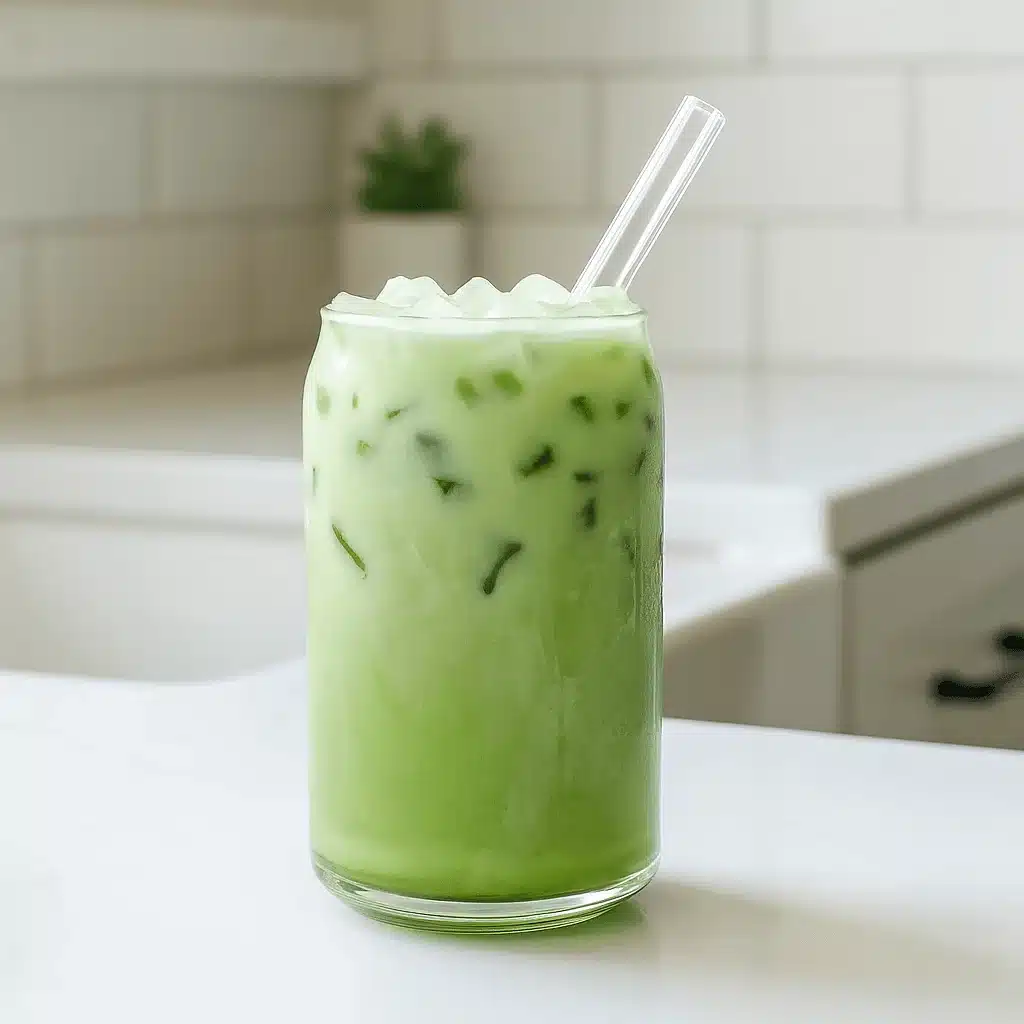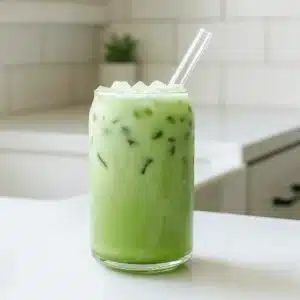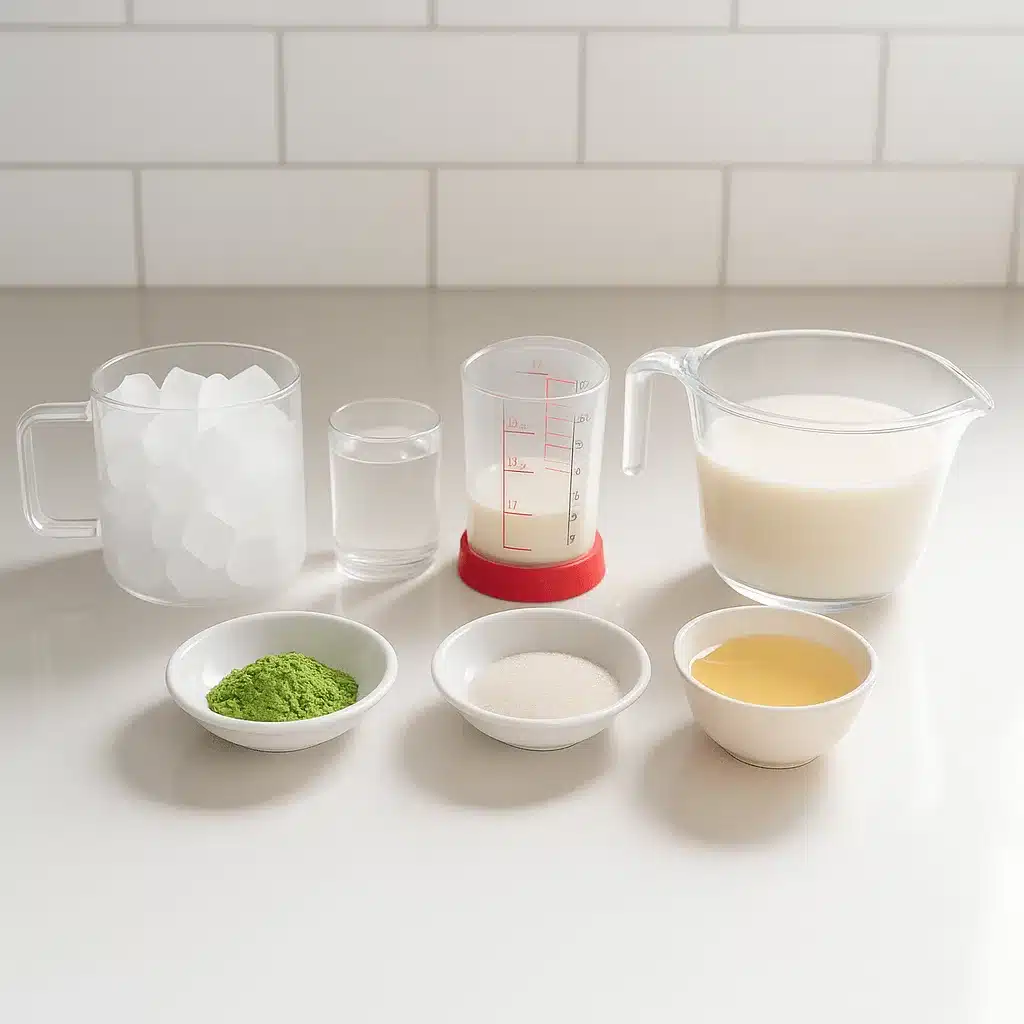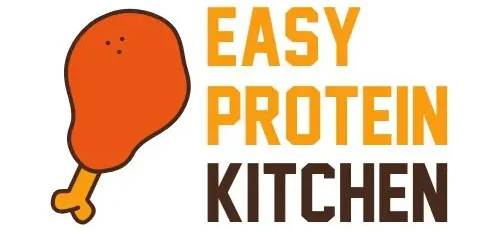Grande matcha latte caffeine is one of the most searched questions for green tea lovers and Starbucks fans alike. If you’ve ever swapped your morning coffee for an iced matcha latte and wondered whether you’re getting the same caffeine kick—you’re not alone. Understanding how much caffeine is in a grande matcha latte can help you decide if this trendy drink is right for your daily energy boost.
One hectic week, I swapped my usual brew for a grande matcha latte from Starbucks. It was creamy, energizing, and smooth—but the $5 price tag? Not so comforting. That’s when I started exploring how to make it better (and cheaper) at home while understanding the grande matcha latte caffeine benefits.

That led me to dig into the grande matcha latte caffeine details—how much caffeine it really delivers, how it compares to coffee, and how to make your own iced matcha latte at home for a fraction of the price.
In this article, you’ll discover:
- How much caffeine is in a Starbucks iced matcha latte
- Why matcha delivers steady energy without the crash
- How to make iced matcha latte with clean, simple ingredients
- Health benefits of matcha and top brands to try
- Popular FAQs like “Is Starbucks matcha latte healthy?”
Table of Contents
Table of Contents
Understanding the Grande Matcha Latte Caffeine Content
Caffeine in a Grande Matcha Latte at Starbucks
Let’s start with the caffeine numbers. A grande matcha latte from Starbucks contains about 80 milligrams of caffeine. That’s slightly more than a traditional green tea but about half the amount found in a regular grande coffee, which delivers 150 mg. Still, for many, it’s the perfect middle ground.
Here’s a quick breakdown:
| Starbucks Size | Scoops of Matcha | Approx. Caffeine (mg) |
|---|---|---|
| Tall | 2 scoops | 54 mg |
| Grande | 3 scoops | 80 mg |
| Venti | 4 scoops | 108 mg |
What contributes to grande matcha latte caffeine levels is Starbucks’ pre-mixed matcha powder, made with green tea and sugar. The sweet taste is addicting, but the added sugar and potentially lower-quality matcha may not be ideal for everyone.
Why Matcha Contains Less Caffeine than Coffee but Still Packs a Punch
Although matcha has less caffeine than coffee, it includes L-Theanine, a naturally occurring amino acid that promotes calm and focus. This combo helps you stay alert without the jittery crash that coffee sometimes causes.
Another reason matcha provides a steady lift? You’re consuming the entire green tea leaf in powdered form—unlike regular tea, where leaves are steeped then tossed. That’s why even a single teaspoon of quality matcha powder delivers a solid energy boost.
Here’s how it compares:
| Beverage | Caffeine (per 16 oz) |
|---|---|
| Starbucks Iced Matcha Latte | 80 mg |
| Homemade Matcha Latte (1 tsp matcha) | 60–70 mg |
| Starbucks Cold Brew Coffee | 200 mg |
| Regular Brewed Green Tea | 30–50 mg |
If you’re caffeine-sensitive or prefer a more balanced energy source, the grande matcha latte caffeine level makes it a great option. And when you make it at home? You control both quality and dosage.
Full Recipe Card: Grande Matcha Latte Caffeine

Iced Matcha Latte Recipe
Ingredients
- 1 -2 teaspoons good quality matcha powder (see note)
- 1-2 teaspoons sugar or sweetener of choice (see note)
- 4 tablespoons water
- 3/4 cup whole milk
- 1/4 cup cream (or more milk)
- ice cubes
Instructions
- Place the matcha, sugar, and water in a small bowl. Whisk until completely smooth.
- Place the ice cubes in a 16 ounce glass or pint mason jar. Pour the milk and cream on top. Pour the matcha mixture over the milk/cream/ice.
- Gently stir and enjoy!
Notes
- Use the higher amount of matcha for a more intense matcha flavor. See post above for brand recommendations.
- You could also use maple syrup, honey, simple syrup, etc. Use the same amount of sweetener as matcha.
Nutrition
What Is Matcha and Why It’s Unique
From Green Tea Leaves to Powder: What Is Matcha?
Before we get into the details of grande matcha latte caffeine, let’s look at what makes matcha special. Matcha is powdered green tea made from shade-grown leaves, giving it more chlorophyll, antioxidants, and a gentle caffeine kick. Unlike steeped tea, you consume the entire leaf—so you get more nutrients and a smoother energy lift.
Thanks to its unique combo of caffeine and L-Theanine, matcha offers calm focus, often called “zenergy.” It’s ideal for those who want a steady buzz without the crash that coffee can bring.
Matcha Grades: Which One is Best for Lattes?
If you’ve ever tried making a latte at home and found it bitter or dull in color, the problem likely lies in the matcha grade. There are three primary types, and they impact both taste and caffeine performance.
Culinary Grade
Culinary matcha is typically used for baking. It’s more affordable but also more bitter, with a muted green or even brownish tone. It contains caffeine, but the quality and flavor make it a poor choice for drinks.
Latte Grade
This is your go-to for everyday drinking. It blends smoothly into milk, has a clean, grassy flavor, and offers a pleasant energy lift. It’s the ideal grade for recreating a matcha green tea iced latte like the one from Starbucks.
Ceremonial Grade
This is the highest quality. It has a naturally sweet, delicate flavor and vibrant color. Though more expensive, it’s perfect for anyone wanting a premium matcha experience—with a potential slight increase in caffeine content per serving due to better leaf quality.
| Grade | Flavor | Color | Best Use |
|---|---|---|---|
| Culinary | Bitter, earthy | Dull green | Baking, smoothies |
| Latte | Mild, grassy | Bright green | Hot or iced lattes |
| Ceremonial | Smooth, sweet | Vivid green | Whisked tea, lattes |
The quality of matcha you choose plays a huge role in how your homemade iced matcha latte tastes and how much energy it delivers. And if you’re looking for that signature grande matcha latte caffeine balance with fewer additives, higher-grade matcha is a smart pick.atcha green tea iced latte.
Comparing Starbucks Iced Matcha Latte vs Homemade
What’s in a Starbucks Iced Matcha Latte?
If you’re a regular Starbucks visitor, you’ve likely seen the iced matcha green tea latte on the menu. But what’s really inside?
The ingredient list is surprisingly short: Milk, Ice, and a Matcha Tea Blend. However, the catch lies in that blend—it’s a pre-sweetened powder made of sugar and ground Japanese green tea. That means every scoop already includes sugar, which reduces your control over sweetness and flavor. Starbucks uses three scoops of this blend for a grande, delivering about 80 mg of caffeine, as we saw earlier in our breakdown of grande matcha latte caffeine content.
This shortcut makes it convenient for baristas and consistent across stores—but not customizable or the cleanest option for health-conscious drinkers.
Cost, Ingredients, and Caffeine Comparison Between Store-Bought and Homemade
Let’s talk numbers—and flavor. A grande iced matcha latte at Starbucks will set you back around $5.25, not including tax or tip. And while you get the convenience, what you’re really paying for is a lot of sugar and potentially lower-grade matcha.
When you make your own iced matcha latte at home, you can use higher-quality matcha powder, choose your milk, adjust sweetness, and spend significantly less.
Here’s a quick cost and ingredient comparison:
| Feature | Starbucks Version | Homemade Version |
|---|---|---|
| Price per 16 oz | $5.25 | $1.50–$2.25 (depending on ingredients) |
| Matcha Quality | Pre-blended (sugar + matcha) | Latte or ceremonial grade (your choice) |
| Sweetener | Refined sugar (pre-mixed) | Optional: maple syrup, honey, etc. |
| Milk Options | Limited | Dairy, oat, almond, coconut, and more |
| Caffeine (approx.) | 80 mg | 60–90 mg (based on 1–2 tsp matcha) |
Making it at home gives you total control over taste and grande matcha latte caffeine levels. Want more energy? Use 2 teaspoons of matcha. Prefer it light? Stick to 1. Craving something richer? Add a splash of cream. You can customize everything—and do it without the extra sugar.
And bonus: homemade lattes look gorgeous in your favorite glass, especially when topped with frothy milk or poured over artisan ice cubes.
How to Make Iced Matcha Latte at Home

Step-by-Step Iced Matcha Latte Recipe
You don’t need to be a barista—or spend $5 a day—to enjoy a refreshing iced matcha latte. Making your own at home takes just a few minutes and gives you full control over the quality, sweetness, and grande matcha latte caffeine levels. Here’s how I make mine with clean, high-quality ingredients:
Ingredients:
- 1–2 teaspoons of matcha powder (latte or ceremonial grade)
- 1–2 teaspoons of sweetener (sugar, maple syrup, honey, or simple syrup)
- 4 tablespoons water (filtered, warm or cold)
- ¾ cup whole milk (or plant-based alternative)
- ¼ cup cream (optional, for extra creaminess)
- Ice cubes (¾–1 cup)
Pro Tip: For a stronger caffeine boost, use 2 teaspoons of matcha. This gives you around 80–90 mg of caffeine, similar to a Starbucks grande.
Instructions:
Step 1: Sift Your Matcha Powder
Add 1–2 teaspoons of matcha powder into a small bowl. Sifting helps remove clumps and ensures a smoother, lump-free drink.
Step 2: Mix with Sweetener
Add your preferred sweetener (equal to the amount of matcha). Stir it in before adding water for better blending.
Step 3: Add Water and Whisk
Pour 4 tablespoons of water over the matcha and whisk vigorously. A bamboo whisk (chasen) is ideal, but you can also use a milk frother or shake in a jar. Whisk until frothy and smooth.
Step 4: Add Ice and Milk
Fill a 16 oz. glass with ice cubes. Pour in ¾ cup of milk and ¼ cup of cream (if using). The cream adds richness, but you can skip it if you prefer a lighter texture.
Step 5: Combine and Serve
Pour the whisked matcha blend over the milk and ice. Give it a gentle stir and enjoy immediately.
Whisking Matcha: Bamboo vs. Frother vs. Spoon
For best results, use a bamboo whisk, which helps aerate and smooth the matcha. If you don’t have one, a handheld frother or even a blender bottle can work. Avoid using just a spoon—matcha tends to clump and won’t fully dissolve.
| Method | Effectiveness | Best For |
|---|---|---|
| Bamboo whisk | Excellent | Traditional method, best froth |
| Handheld frother | Good | Quick, easy cleanup |
| Blender bottle | Moderate | On-the-go prep |
| Spoon | Poor | Leaves clumps |
Making your own iced matcha latte is a fun way to experiment with flavor and texture while tailoring the grande matcha latte caffeine content to fit your energy needs. Whether you’re craving a light afternoon pick-me-up or a powerful morning wake-up, this homemade version is creamy, customizable, and always satisfying.
The Perfect Ratio for Matcha Latte
Understanding the Ideal Matcha-to-Water-to-Milk Ratio
If you want your homemade drink to taste just as good—or better—than a store-bought version, nailing the ratios is essential. The right mix of matcha, water, and milk doesn’t just affect flavor—it also impacts the grande matcha latte caffeine level in each sip.
Here’s my go-to ratio for one glass (about 16 oz, the same as a Starbucks grande):
- 1–2 teaspoons matcha powder
- 4 tablespoons filtered water
- ¾ cup milk (any variety you prefer)
- ¼ cup cream (optional, for richness)
- Ice to fill
Using 1 teaspoon of matcha will give you approximately 60–70 mg of caffeine, while 2 teaspoons will hit around 80–90 mg—very close to the grande matcha latte caffeine amount at Starbucks. This lets you match or even surpass that caffeine level, based on your needs.
If your goal is to recreate that familiar buzz without spending $5+ a cup, this is the starting point you need.
Tips for Adjusting Sweetness and Caffeine Levels
Another major advantage of making your own matcha lattes? Total control over sweetness and caffeine content. Starbucks uses a pre-sweetened matcha blend, meaning there’s no adjusting sugar levels—or the grande matcha latte caffeine dose—once it’s made.
Want it sweeter?
- Use 1:1 matcha-to-sweetener ratio (e.g., 1½ tsp matcha + 1½ tsp maple syrup)
- Add a drop of vanilla extract for that café-style flavor
- Try sweetened vanilla almond or oat milk
Want more energy?
- Increase matcha to 2 teaspoons for an 80–90 mg caffeine boost
- Use ceremonial grade matcha, which can contain slightly more caffeine
- Make a more concentrated matcha base (less water, more powder)
Here’s a helpful breakdown for different taste and energy goals:
| Drink Style | Matcha (tsp) | Sweetener | Caffeine Level |
|---|---|---|---|
| Mild & Balanced | 1 | 1 tsp or none | 60–70 mg |
| Café-Style Flavor | 1.5 | 1.5–2 tsp | ~75 mg |
| Stronger Energy Option | 2 | 2 tsp+ | 80–90 mg (like Starbucks) |
With this approach, you’re not just copying the Starbucks iced matcha latte—you’re improving it. You’re keeping the core benefits of grande matcha latte caffeine while removing the refined sugar and unnecessary additives.
Health Benefits of Matcha Green Tea
Antioxidants and Amino Acids: What Makes Matcha Good for You
Beyond flavor and energy, matcha offers real health perks. It’s loaded with catechins, especially EGCG, a powerful antioxidant linked to reduced inflammation, improved heart health, and even cancer prevention.
Unlike steeped tea, matcha is consumed whole—leaf and all—so you’re getting far more nutrients. That’s also why the grande matcha latte caffeine delivers smoother, longer-lasting energy. Thanks to L-Theanine, matcha promotes calm focus instead of coffee jitters.
Pairing your morning matcha with the Pink Salt Trick for Weight Loss—a warm mix of water and Himalayan salt—can boost digestion and hydration. Together, they create a powerful start for clean energy and gut support.
Is Starbucks Matcha Latte Healthy?
That depends. Starbucks uses a pre-sweetened matcha blend, meaning sugar is added before it even hits your cup. A grande iced matcha latte has about 28 grams of sugar—almost 7 teaspoons.
Here’s the quick breakdown:
| Starbucks Grande Iced Matcha Latte | Amount |
|---|---|
| Sugar | 28g |
| Calories | ~200 |
| Caffeine | ~80 mg |
So yes, you still get the grande matcha latte caffeine benefits—but the added sugar may work against your wellness goals.
Making it at home lets you skip the extra sugar, use better-quality matcha, and control your caffeine dose—all while keeping the flavor.
Flavoring and Customizing Your Iced Matcha Latte
Using Vanilla, Cream, or Non-Dairy Milks
One of the biggest perks of making your own matcha latte is the ability to customize every sip. While Starbucks gives you a fixed formula, at home you can fine-tune the flavor, texture, and even the grande matcha latte caffeine level to suit your day.
Here are some tasty add-ins and tweaks:
- Vanilla Extract – A small splash adds cozy, café-style flavor.
- Heavy Cream or Half-and-Half – Use a splash with milk for a richer, dessert-like texture.
- Oat Milk – Naturally sweet and creamy, it’s a favorite dairy-free alternative.
- Almond Milk – Light and nutty, great for a low-calorie latte.
- Coconut Milk – For a tropical twist with extra creaminess.
You can mix and match these with any milk base to create your own signature iced matcha latte—no coffee shop required.
Creative Additions to Elevate Your Matcha Experience
Want to take your latte to the next level? Try one of these fun upgrades:
- Cinnamon or Nutmeg – Sprinkle on top for warmth and depth.
- Honey or Maple Syrup – Natural sweeteners that pair beautifully with matcha.
- Collagen Powder or Protein Powder – Add a nutritional boost without altering taste.
- Chia Seeds or Flax – For extra fiber and texture (just blend well!).
- Aromatics like Lavender or Rose Water – Subtle, fragrant twists that turn your drink into a calming treat.
These flavorings not only elevate the experience but also give you more variety while keeping the grande matcha latte caffeine benefits intact.
Best Matcha Brands for Homemade Lattes
Top Latte Grade and Ceremonial Matcha Picks for Quality and Flavor
If you’re serious about crafting the perfect iced latte with just the right grande matcha latte caffeine lift, the matcha brand you choose truly matters. Not all powders are created equal. Some are bitter, brownish, and lack the smooth, vibrant flavor you expect from a good latte.
Here are my top-tested matcha powders that work beautifully in lattes:
Best Overall Latte Grade Matcha
- Encha Latte Grade
Smooth, vibrant, not too grassy. Balanced for hot or iced lattes. Organic and affordable for daily use.
Best Ceremonial Grade for Lattes
- Thrive Market Ceremonial Grade
Slightly sweeter and richer in flavor. Ideal if you want a touch more caffeine and a luxurious texture.
Best Budget-Friendly Option
- Mizuba Culinary Grade
While not ceremonial, this one performs surprisingly well for lattes at a lower price point. Great for beginners.
Best for Bright Green Color
- Ippodo Ceremonial Grade
Premium and ultra-fresh, this is a higher investment, but delivers unmatched color and clarity.
Where to Buy Quality Matcha
You can find excellent matcha online through direct brand websites or curated retailers like:
- Thrive Market
- Amazon (from official brand stores)
- Encha.com
- IppodoTea.com
Avoid generic brands or low-cost matcha from unknown sources—they often taste dull, bitter, and offer lower grande matcha latte caffeine performance due to poor leaf quality.
Caffeine Comparisons and Daily Consumption Tips
Matcha vs Coffee vs Green Tea: How Much Is Too Much?
When choosing your daily source of energy, it helps to compare caffeine content across popular drinks. A grande matcha latte typically contains 80–90 mg of caffeine, offering a smoother, less intense lift than coffee while still being stronger than regular green tea.
Here’s a quick side-by-side breakdown:
| Drink (16 oz) | Caffeine Content |
|---|---|
| Grande Matcha Latte (2 tsp matcha) | 80–90 mg |
| Regular Green Tea | 30–50 mg |
| Starbucks Cold Brew | 200 mg |
| Drip Coffee | 150–180 mg |
| Espresso (2 shots) | 150 mg |
For most people, a grande matcha latte strikes the perfect balance: strong enough to sharpen focus, but gentle enough to avoid caffeine crashes. It’s especially ideal if you’re looking for consistent energy with added antioxidants and fewer side effects
Who Should Limit Matcha Intake and Why
While matcha is a healthy choice for many, it’s still important to manage your overall caffeine intake—especially if you’re sensitive or combining multiple caffeinated drinks in a day.
Consider limiting your grande matcha latte caffeine intake if:
- You experience jitters or anxiety from stimulants
- You have heart conditions or high blood pressure
- You’re pregnant or breastfeeding (consult your doctor)
- You struggle with sleep or consume caffeine too late in the day
That said, most people can safely enjoy 1 to 2 teaspoons of matcha per day, equating to one regular grande matcha latte. If you’re craving more, try spreading your servings out to avoid overdoing it.
Many switch from coffee to matcha for cleaner energy. While coffee can cause jitters, matcha offers calm focus. Some use the Coffee Loophole—a gentler coffee blend—but matcha stays a top choice for lasting, balanced energy.
Conclusion: Why Your Own Grande Matcha Latte Is Worth It
A grande matcha latte offers a smooth energy boost with less caffeine than coffee—but the Starbucks version also comes with added sugar and a steep price. By making it at home, you control everything: the quality of matcha, the level of sweetness, and your caffeine intake.
You’ll enjoy:
- Cleaner ingredients
- Custom caffeine levels
- Lower cost per drink
Whether you need a calm morning lift or a refreshing afternoon pick-me-up, a homemade grande matcha latte delivers all the benefits—without the sugar crash or $5 price tag.
Follow Easy Protein Kitchen on Pinterest for fresh ideas daily!
FAQs: Grande Matcha Latte Caffeine – What You Need to Know
How much caffeine is in a grande matcha latte?
A grande matcha latte from Starbucks contains about 80 mg of caffeine, thanks to the three scoops of their pre-blended matcha powder (which includes both green tea and sugar). If you make your own at home using 2 teaspoons of matcha powder, you can expect a similar caffeine level—around 80–90 mg depending on the brand and quality of the matcha.
Is matcha latte high in caffeine?
Compared to green tea, yes—a matcha latte is relatively high in caffeine. But compared to coffee, it’s more moderate. A grande matcha latte caffeine level falls between 60–90 mg, while a typical cup of coffee ranges from 150–200 mg. The added benefit? Matcha delivers that caffeine alongside L-Theanine, which promotes a calmer, more sustained energy boost.
What is the ratio for matcha latte?
A balanced ratio for an iced or hot matcha latte is:
1–2 tsp matcha powder
4 tbsp water
¾ cup milk
1–2 tsp sweetener (optional)
This ratio gives you control over both flavor and caffeine content, letting you adjust your drink to match the energy of your day.
Is Starbucks matcha latte healthy?
The Starbucks matcha latte isn’t unhealthy, but it’s important to know that their matcha is pre-sweetened. A grande contains 28g of sugar, which is higher than most people expect. If you’re looking for all the benefits of matcha—antioxidants, steady caffeine, and amino acids—without the added sugar, a homemade version is a much healthier choice.
